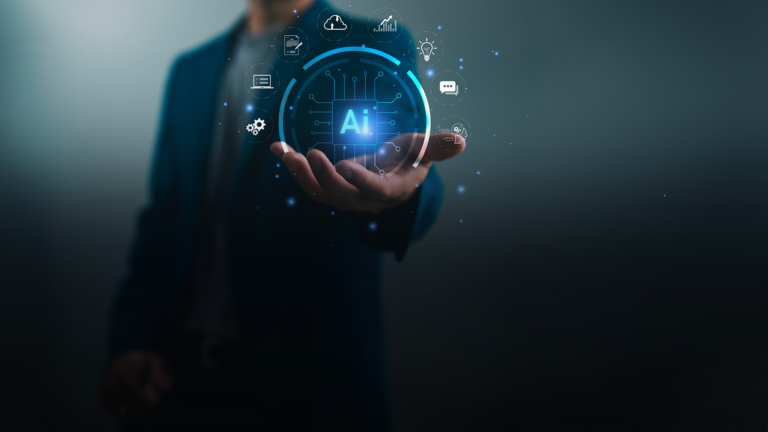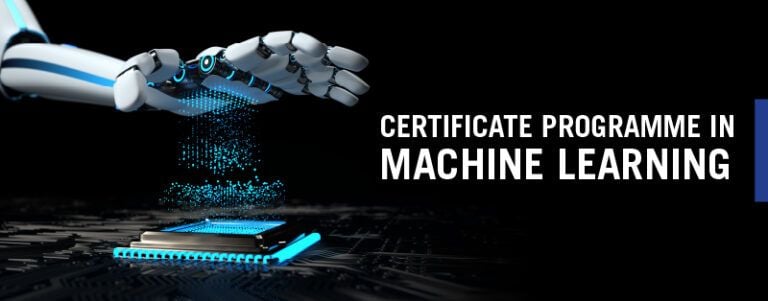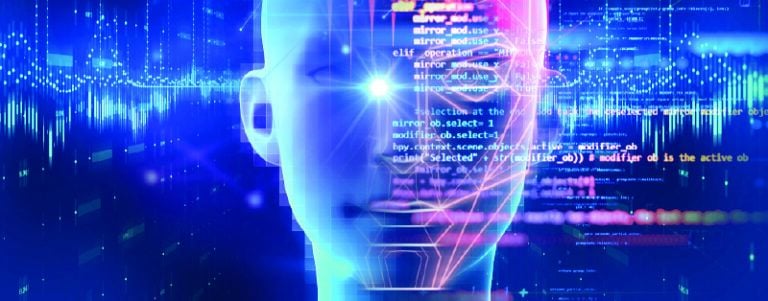The Power of Superminds: AI and Human Intelligence in Business

The integration of AI and human intelligence in the modern business landscape signifies a pivotal shift. In essence, from decision-making to production, businesses and organizations are increasingly harnessing AI’s power by weaving it into their daily operations. Consequently, this amalgamation of human and AI intelligence is giving rise to the era of “superminds”—a potent combination of human creativity and AI’s computational strength. In this blog, we will delve into how superminds are transforming various business aspects, including decision-making processes and organizational structures, thus reshaping the corporate world.
In this blog, we will discuss:
- The Evolution of Superminds
- Key Components of Superminds
- Benefits of Superminds in Organizations
- Challenges and Ethical Considerations
- Strategies for Implementing Superminds
- Future Trends in Superminds
The Evolution of Superminds
The supermind, in essence, represents a collective intelligence. Collective intelligence is the result of groups working together in a way that appears to be intelligent. In a sense, collective intelligence is a property of superminds. Historically, superminds have always existed, but technological advancements, especially AI, have radically reshaped them. In his book titled “Superminds: The Surprising Power of People and Computers Thinking Together”, Thomas W. Malone, founder of the MIT Centre for Collective Intelligence, notes that machines, especially when powered with machine learning, can enhance this collective intelligence, leading to the creation of superminds that are smarter than any group or individual is previously known. Neither humans nor AI individually possess the uniqueness and capability that the supermind offers. Instead, they evolve out of the synergistic relation between AI and human intelligence. As we delve further into this human and AI collective, let’s briefly examine the history of superminds, reflecting on how it began before the technological era and how advancements in the digital realm radicalized it.
A. Historical Perspective
Early Forms of Collaboration
In the past, collaboration was confined to human interactions, often limited by geographical and communication barriers. Therefore, the scope of problem-solving was restricted, as ideas and solutions remained isolated. However, these early collaborations laid the groundwork for future advancements, fostering a culture of collective effort, shared goals, and collaboration.
Emergence of Artificial Intelligence
While computers had already transformed various aspects of life, the advent of AI fundamentally changed the game. For instance, AI introduced capabilities like pattern recognition and predictive analytics. This marked a significant shift in addressing complex challenges. In essence, AI’s emergence enabled a more profound analysis and understanding of vast data sets.
B. The Synergy of AI and Human Intelligence
Advancements in Technology
Technological advancements, particularly in computing power and data analysis, have enabled the seamless amalgamation of AI and human intelligence. This synergy has created superminds capable of tackling problems beyond individual capabilities. For instance, cloud computing and big data analytics have allowed for real-time collaboration and information sharing, thus enhancing the collective intelligence of human and AI systems.
Shifting Organizational Paradigms
Organizations are now embracing the concept of superminds, and this is transforming traditional work paradigms by fostering environments where human creativity and AI efficiency coexist. Additionally, this new paradigm, defined by the amalgamation of AI and human intelligence, allows for a more dynamic and responsive approach to challenges, leveraging the strengths of both human and AI collaboration. It is creating workplaces where AI augments human decision-making, and human insights guide AI development, ensuring a balanced and effective partnership.
ALSO READ: 10 Best AI Tools to Increase Your Productivity in the Workplace
Key Components of Superminds
A. Human Intelligence
Cognitive Abilities
Problem-Solving
Human problem-solving skills remain crucial in superminds because of their capability of nuanced understanding and adaptability. In essence, AI and human intelligence, with its data processing capabilities, can help bridge the gap between human intuition and machine efficiency.
Creativity
Human creativity, which AI cannot replicate, fuels innovation within superminds by providing unique perspectives and solutions. Furthermore, this creativity is essential in navigating uncharted challenges like ethical dilemmas and abstract problem-solving, where AI alone falls short.
Emotional Intelligence
Empathy
Notably, AI and human intelligence needing to work off each other is clear when one considers emotional intelligence as a necessary skill today. Empathy in superminds enhances team dynamics and customer relations, fostering a more inclusive environment. Additionally, it plays a key role in understanding and addressing human-centric issues, such as user experience and emotional responses, which AI cannot fully comprehend.
Collaboration Skills
Practical collaboration skills in superminds ensure smooth AI and human intelligence interaction, which is critical in maximizing combined intelligence. These skills facilitate clear communication and mutual understanding between human and AI collaborators..
B. Artificial Intelligence
Machine Learning Algorithms
On the other hand, AI and human intelligence also ensure quicker, more efficient results. For instance, machine learning algorithms in superminds analyze vast data sets, such as consumer behavior patterns and market trends, providing insights beyond what a solely human-dependent survey would accomplish.
Automation Tools
Automation tools in superminds, such as robotic process automation and AI-driven data analysis platforms, handle repetitive tasks. Additionally, they increase efficiency and reduce the likelihood of human error in processes like data entry, scheduling, and basic customer inquiries.
ALSO READ: How the Use of Data and AI is Transforming the Automotive Industry
Benefits of Superminds to Organizations
A. Improved Decision-Making
Data-Driven Insights
Harnessing data-driven insights, superminds empower organizations to make more informed decisions across sectors. For instance, in marketing, the assemblage of AI and human intelligence analyzes consumer behavior, utilizing AI to sift through vast data sets and human expertise to interpret these insights and tailor strategies effectively. On the other hand, superminds interpret market trends and financial data in finance, combining AI’s computational power with human financial acumen.
Augmented Decision-Making Processes
Superminds augment decision-making processes by blending human intuition with the power of AI, creating a more dynamic and effective approach to problem-solving. For instance, in health care, the synergy of AI and human intelligence aids in diagnosing diseases, with AI correlating patient data against vast medical databases and human medical professionals using their experience and knowledge to interpret these findings.
B. Enhanced Productivity
Task Automation
Superminds play a pivotal role in task automation. For example, while AI-driven robots handle assembly lines in manufacturing, human workers oversee and fine-tune these operations. This ensures quality control and brings innovative solutions to unforeseen challenges. Such synergistic collaboration leads to a significant boost in productivity, as it combines the precision and endurance of AI with the strategic and creative input of human workers.
Streamlined Workflows
Streamlined workflows in superminds are evident across various sectors. For instance, the supermind formed by collective AI and human intelligence facilitates smoother transitions between automated processes and human-led decision-making in fields like banking and education. For example, in banking, AI algorithms might process transactions or assess risks, but human judgment is crucial in making final decisions on complex cases. In education, while AI can manage administrative tasks and tailor learning paths, educators bring irreplaceable value to mentoring and inspiring students.
C. Innovation and Creativity
Human and AI Collaboration
The collaboration between human and AI in superminds creates a fertile ground for innovation, blending human Collective Intelligence (CI) with AI. This partnership is crucial in developing groundbreaking solutions, as it combines the creative-imaginative capabilities of people with the analytical prowess of AI. Such a collaboration leads to the creation of products and services that are not only technologically advanced but also deeply attuned to human needs and preferences.
Accelerated Ideas Generation
Superminds significantly shorten the innovation cycle by combining diverse human perspectives with AI’s rapid data processing. This fusion of CI and AI accelerates ideas generation, allowing for a rapid iteration of concepts and solutions. For instance, the COVID-19 pandemic showcased how superminds can accelerate the generation of ideas. By pooling diverse human insights from health-care professionals with AI’s ability to process vast amounts of epidemiological data, superminds were able to rapidly develop and iterate strategies to track and contain the virus. This collaboration significantly shortened the innovation cycle in public health, which, in turn, led to quicker responses and more effective measures to mitigate the pandemic’s impact.
ALSO READ: The Top 10 Indian Industries Hiring an AI Specialist
Challenges and Ethical Considerations
A. Integration Challenges
Technical Obstacles
Technical obstacles in integrating superminds often involve complexities in harmonizing AI systems with existing human workflows. For example, these challenges include integrating diverse software platforms, ensuring data compatibility, and establishing reliable communication channels between AI and human team members. Overcoming these technical hurdles requires significant investment in technology and training, but it is essential for successfully implementing and optimizing superminds in any organization.
Resistance to Change
Resistance to change in organizations often stems primarily from concerns about job security. Additionally, the unfamiliarity with new technologies and a preference for traditional methods also play a key role. Addressing these concerns through education, transparent communication, and involvement in the integration process is crucial for a smooth transition and widespread acceptance of superminds.
B. Ethical Concerns
Bias in AI Algorithms
Bias in AI algorithms, often resulting from skewed data sets or flawed design, can lead to skewed results in superminds. Hence, constant monitoring, regular audits, and inclusive data practices are necessary to identify and rectify these biases. Ensuring diversity in AI training data and development teams can also help mitigate bias.
Job Displacement and Societal Impacts
The concern of job displacement and societal impacts due to superminds is significant. However, historical trends in technological advancement suggest that while some jobs may become obsolete, new opportunities often emerge. Utilizing superminds will likely create new job prospects, particularly in areas requiring human oversight, decision-making, and creative input. Hence, proactive strategies, including workforce retraining and education, can help mitigate the prospect of job loss and ensure equitable outcomes in the evolving job market.
ALSO READ: Difference Between Data Science, Artificial Intelligence and Machine Learning
Strategies for Implementing Superminds
A. Organizational Readiness
Assessing Current Capabilities
This involves evaluating the existing technological infrastructure and workforce skills. This step is crucial in implementing superminds, as it identifies gaps in technology and training. Additionally, this assessment helps pinpoint areas like data management and AI literacy that need improvement, setting the stage for a successful integration of human and AI collaboration.
Developing a Roadmap for Integration
Organizations must outline specific steps for incorporating AI into existing workflows. This roadmap is essential for a structured and effective implementation process, guiding organizations through each phase of integration. It should include timelines, resource allocation, and milestones for integrating AI with human intelligence, ensuring a smooth transition to a supermind-enabled operation.
B. Skill Development
Training Programs for Employees
Employee training programs should focus on developing AI literacy and data interpretation skills. These programs are crucial in preparing staff to work effectively with superminds. Additionally, they should include hands-on experience with AI tools, understanding AI decision-making processes, and learning how to interpret AI-generated data. Furthermore, these programs should ensure that employees can collaborate effectively with AI systems.
Upskilling and Reskilling Initiatives
Upskilling and reskilling initiatives should target areas like data analytics, machine learning, and ethical AI usage. These initiatives are vital for maintaining a workforce that can adapt to evolving supermind technologies. They should provide opportunities for employees to learn new skills relevant to AI integration and its applications in their specific job roles.
ALSO READ: Meaning and Application of Artificial Intelligence and Machine Learning
Future Trends in Superminds
A. Advancements in AI Technology
Predictive Analytics
Predictive analytics, a rapidly advancing facet of AI technology, will significantly enhance the foresight capabilities of future superminds. This advancement will enable businesses to analyze patterns and trends, leading to more proactive and informed decision-making.
Natural Language Processing
Natural Language Processing (NLP) will be pivotal in improving human-AI communication within superminds. This advancement is critical for seamless integration, as it allows AI systems such as ChatGPT to understand and respond to human language more effectively, enhancing customer service, content creation, and various other business operations.
B. Evolving Organizational Structures
Flexibility and Adaptability
Future organizational structures must be highly flexible and adaptable to accommodate the dynamic nature of superminds. This flexibility will not only foster innovation but also allow businesses to rapidly adapt to new AI advancements and market changes. As AI evolves, organizations that can quickly integrate new technologies and strategies will have a competitive edge.
New Roles and Responsibilities
The continuous growth of AI in the business world is reshaping the workforce and leading to the emergence of new roles and responsibilities. These range from prompt engineers for ChatGPT to business intelligence developers for AI analytics dashboards. Therefore, adapting to these changes and embracing new AI-centric roles is a necessity for businesses aiming to thrive in this rapidly changing landscape.
ALSO READ: Building the Perfect Resume for an Artificial Intelligence Engineer
There has been a noticeable increase in the adoption of AI technologies in recent years and this is only set to surge over the next few years. As a result, these trends suggest a tremendous potential for the development and impact of superminds.
For those looking to be part of this exciting future and delve further into the supermind structures composed of AI & human intelligence, now is the time to enhance your skills. Consider joining Emeritus’ artificial intelligence courses and machine learning courses and machine learning courses, and stay ahead in this rapidly evolving field.
Write to us at content@emeritus.org





